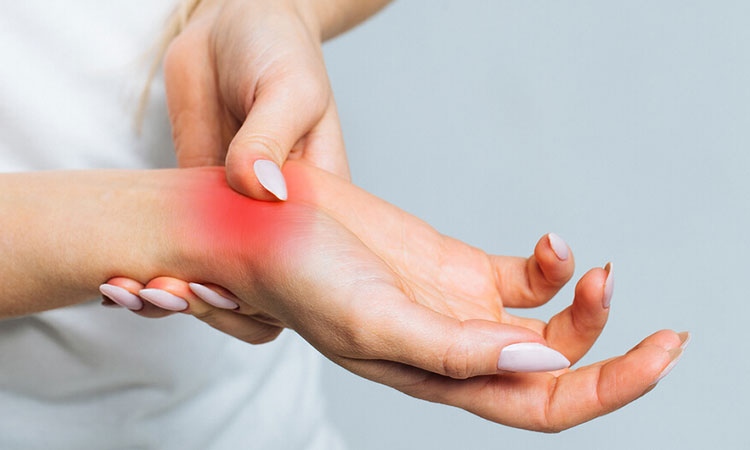
Cumulative trauma disorders (CTDs) is characterized by injury to the musculoskeletal system, and often affects joints, tendons, ligaments, muscles, nerves, and blood vessels. These injuries are often caused by repetitive stress or overuse while working, playing sports, or engaging in other activities. CTDs are the most significant work-related health problems in the U.S.
CTD is not a disease, but rather, it is an unpleasant response to repeated demands on our body without adequate time to recover before more stress is applied. The purpose of this article is to explain the causes and types of CTDs, as well as how these conditions can lead to drug or alcohol addiction.
Causes of Cumulative Trauma Disorders
CTDs are typically the result of a combination of risk factors, including the following:
- Repetitive motion, especially those involving pulling, pushing, lifting, or gripping
- Awkward body positions or postures that are not ergonomically correct
- Holding the same body position without rest or movement for a prolonged period
- Mechanical compression of tissues in the hand against hard edges, such as tools that put pressure on the palms, combined with the rapid movement of body parts such as swinging one’s arm
- Vibration, particularly in cold environments, such as using vibrating hand tools
- Mental and emotional stress that causes muscles to tighten and restrict blood flow without breaks and days off
Muscle Tension
All parts of the body need access to a constant blood supply abundant in oxygen and nutrients to function efficiently. Reducing the blood supply can result in injury to body tissues. Tense muscles will then pinch off the blood supply that is the source of fuel and energy.
Muscles can still get energy without oxygen, however, from lactic acid. Unfortunately, lactic acid is very effective at causing pain. As the pain increases, muscles will continue to tighten to protect the injured site, which will reduce the blood supply even further. If nerves don’t receive enough blood and the area is being squeezed by muscle tension, the nerves begin to tingle or go numb.
Repetitive Motion
Injuries related to repetitive motions can lead to tissue damage from repeated trauma, such as typing or painting. In fact, almost any activity that causes repeated small trauma to soft tissue, such as nerves, tendons, and muscles, can result in CTD. The injury is caused by performing the same movement over and over again, rather than by trauma that occurs in a single event.
Overuse
Continuing to use joints and muscles after they are already worn out increases the risk of injury. When these body parts are overworked, they don’t receive enough rest and are not given a chance to recover fully.
Incorrect or Static Posture
Awkward sitting and standing postures place undue stress on the body and can cause pain and stiffness. Joints are designed to move, and even correct posture, if held for too long, may be considered overuse.
Types of Cumulative Trauma Disorders
Tendon Disorders (Tendonitis)

CTDs are primarily disorders of tendons, which are flexible but inelastic cords of robust, fibrous collagen tissue that attach a muscle to a bone. Tendon disorder can also affect a tendon’s protective coverings (synovial sheaths). Symptoms may include the following:
- Dull ache around the injured tendon
- Tenderness in the area when touched
- Discomfort or stiffness associated with certain movements
- Incapacitating pain from repeated injuries if left untreated
- Common types of tendon disorders include tenosynovitis,
- Golfer’s elbow, tennis elbow, bursitis, and tendonitis of the rotator cuff, ankle, or bicep.
Nerve Disorders
In addition to trauma to the tendons, stress on the nerves caused by repeated pressing against the hard edges of work surfaces, tools, or nearby bones can lead to nerve CTDs. Common types of nerve CTDs caused in the workplace include carpal tunnel syndrome, thoracic outlet syndrome, and Raynaud’s disease.
How Cumulative Trauma Disorder May Cause Addiction
Chronic pain is a common reason why people turn to substance abuse. Opioids are painkilling drugs that are often the go-to self-medication of choice, and they can be obtained in a variety of ways. Although they are not generally recommended for long-term use, they are nonetheless sometimes prescribed for it. Prescription opioids, such as oxycodone or hydrocodone, can also be purchased on the black market as a product of drug diversion.
Some people may eventually turn to heroin or illicit fentanyl if they develop a high tolerance for prescription opioids or can no longer afford or obtain them. These drugs are incredibly powerful, addictive, and dangerous. Heroin addiction is notoriously difficult to beat and can develop rapidly.
Alcohol is another popular choice for those who are seeking to numb pain and discomfort. When used in excess, drinkers may indeed experience some pain relief. Unfortunately, alcohol abuse can lead to a dependence that, like heroin, can be challenging to overcome.
In conjunction with opioids or alcohol, it is not uncommon for people to also use or abuse muscle relaxers, nerve pain medication such as gabapentin, and sleeping pills. The use of multiple substances with depressant effects is extremely risky and can cause life-threatening central nervous system depression and death.
Chronic pain is something in which millions of Americans must deal. Many of these issues are related to work practices and certain repetitive activities. However, in most cases, the use of addictive substances is not the best answer to the problem. Once a dependence on drugs or alcohol has developed, a person is at risk for far more emotional and physical health problems, including more pain and suffering.
Healthy Treatments for CTD

If you have a CTD, there are many traditional, non-surgical treatments available that can relieve some pain and discomfort without the use of addictive substances. Anti-inflammatory medications are often used in combination with physical or occupational therapy, ice packs, or electrical stimulation. Special exercises may also help, and in some cases, chiropractic services may be beneficial.
A person suffering from CTD should assess his or her work and recreational activities to determine factors that are contributing to the problem. Note that tension restricts blood flow and can result in a lack of oxygen and nutrients to nerves and muscles. This effect can exacerbate CTD symptoms, but resting the injured area while at work or during other activities can relieve tension and promote recovery.
Getting Treatment for Addiction
Harmony Treatment and Wellness offers an integrated, individualized approach to addiction treatment that is designed to address all aspects of a person’s emotional and physical well-being. For those with CTD or other physical problems, this can be vital to prevent relapse and ensure that a person is as comfortable as possible throughout the recovery process.
Our caring medical and mental health professionals are highly-skilled and administer services to our patients with compassion and expertise. We believe that each individual, regardless of their past, is entitled to receive the very best care available. Our programs feature evidence-based therapies and activities, including psychotherapy and group support, clinically-proven to be beneficial for recovery.
If you or someone you love is suffering from chronic pain and an addiction to drugs or alcohol, contact us today and find out how we can help!
⟹ READ THIS NEXT: Impulse Disorder and Substance Abuse
